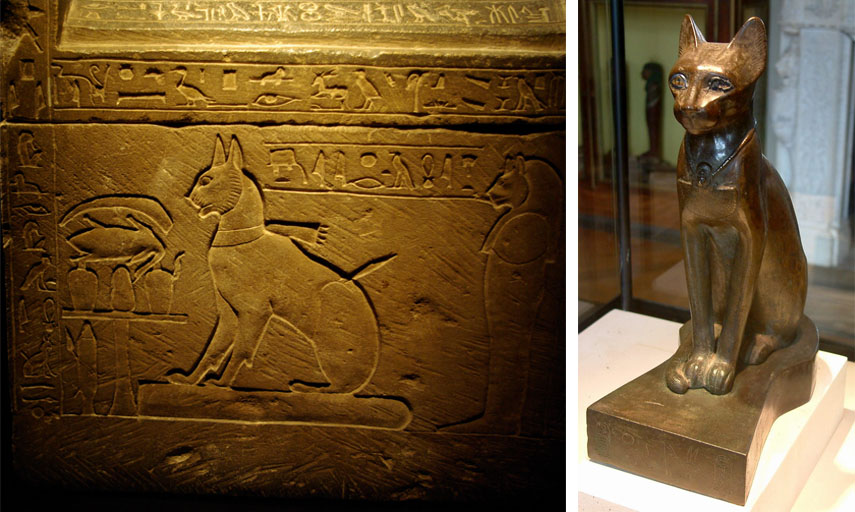Cats have been an enduring muse in art and culture for millennia, captivating the human imagination with their enigmatic beauty, grace, and independence. From ancient Egypt to the Renaissance and into the modern era, cats have been depicted in various forms of art, reflecting the shifting cultural and societal attitudes towards these agile creatures.
Ancient Egypt: Worship and Reverence
The history of cats in art begins in ancient Egypt, where they were revered as sacred animals. The Egyptians admired the cat’s agility, strength, and hunting prowess, seeing them as protectors against venomous snakes and pests. The goddess Bastet, often depicted with the head of a cat or lioness, was worshipped as the deity of protection, fertility, and motherhood. Cats were mummified and buried in elaborate tombs, a testament to their revered status. The art of this period often features cats in domestic settings, hunting scenes, and as companions to the gods, showcasing their integral role in Egyptian society and spirituality.
The Middle Ages: Symbolism and Allegory
During the Middle Ages, cats in art took on a more complex and often dualistic symbolism. On one hand, they were seen as protectors against disease and evil, a continuation of their revered status in some cultures. On the other hand, cats became associated with witchcraft and the devil, leading to their persecution during the witch trials. Despite this, cats were still depicted in illuminated manuscripts and tapestries, often symbolizing cunning, independence, or serving as allegorical figures in moral tales.
The Renaissance: Domesticity and Allegory
The Renaissance brought a renewed interest in the natural world, and cats began to appear more frequently in art as symbols of domesticity and as allegorical figures. Artists like Albrecht Dürer and Leonardo da Vinci captured the beauty and grace of cats in their sketches and paintings, showcasing a keen observation of their anatomy and behavior. Cats were also used to convey moral lessons, with their independence and curiosity serving as metaphors for human virtues and vices.
The 19th Century: Romanticism and Beyond
The 19th century saw cats becoming popular subjects in art, reflecting the changing cultural attitudes towards pets and domesticity. The Romantic movement, with its emphasis on emotion and individualism, found a kindred spirit in the cat’s aloof and independent nature. Artists like Edgar Degas and Henri Matisse captured the elegance and mystery of cats in their paintings, while writers like Charles Baudelaire and Edgar Allan Poe immortalized them in poetry and short stories.
The 20th Century to Present: Modern Icons
In the 20th century, cats continued to be a popular subject in art, appearing in various styles from Surrealism to Pop Art. Andy Warhol’s screen prints of cats and the whimsical illustrations of cats by artists like Théophile-Alexandre Steinlen and Louis Wain have become iconic. Today, cats are more popular than ever, thanks in part to the internet, where they have become a cultural phenomenon. Social media is awash with cat memes, videos, and art, showcasing the enduring fascination with these creatures.
Conclusion
The history of cats in art and culture is a testament to their enduring appeal and the multifaceted roles they have played in human society. From sacred animals in ancient Egypt to symbols of domesticity and independence in the modern era, cats have been an ever-present muse, reflecting the shifting cultural and societal attitudes throughout the ages. Their grace, mystery, and independence continue to captivate the human imagination, making them an enduring subject in art and culture.
